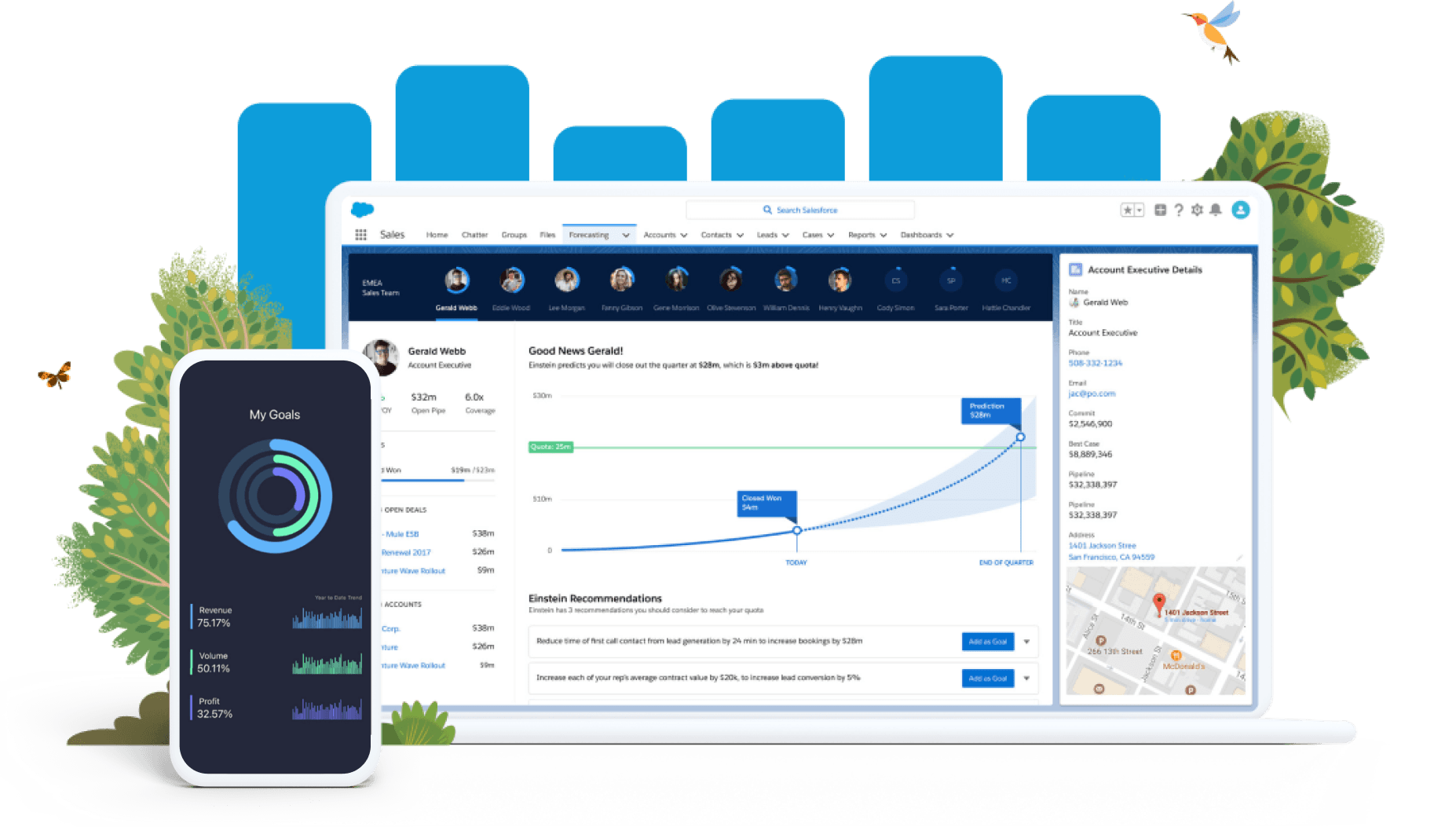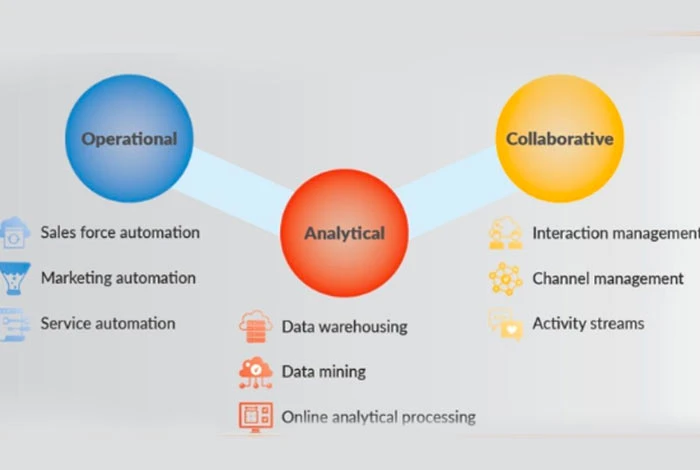In today’s competitive business landscape, understanding customer behavior and preferences is crucial for driving growth and staying ahead of the curve. Customer Relationship Management (CRM) analytics plays a vital role in helping businesses gain valuable insights into their customers’ needs and preferences.
By leveraging CRM analytics, organizations can uncover hidden patterns and trends, make data-driven decisions, and develop targeted marketing strategies.
Effective CRM analytics can lead to improved customer satisfaction, increased revenue, and enhanced business performance, making it an essential tool for businesses seeking to drive growth and achieve long-term success.
Unlocking Business Potential through CRM Analytics
Understanding CRM Analytics for Growth is crucial in today’s data-driven business landscape. CRM analytics is the process of analyzing customer data to gain insights into customer behavior, preferences, and needs.
By leveraging CRM analytics, businesses can make informed decisions, improve customer relationships, and drive growth.
Key Components of CRM Analytics
CRM analytics involves several key components, including data integration, data analysis, and data visualization. Data integration involves combining customer data from various sources, such as sales, marketing, and customer service.
Data analysis involves using statistical models and machine learning algorithms to identify patterns and trends in customer behavior. Data visualization involves presenting complex data insights in a clear and actionable format.
| Component | Description |
|---|---|
| Data Integration | Combining customer data from various sources |
| Data Analysis | Using statistical models and machine learning algorithms to identify patterns and trends |
| Data Visualization | Presenting complex data insights in a clear and actionable format |
Benefits of CRM Analytics
The benefits of CRM analytics are numerous, including improved customer satisfaction, increased revenue, and enhanced customer retention. By analyzing customer data, businesses can identify areas for improvement and develop targeted marketing campaigns to drive growth.
Additionally, CRM analytics can help businesses to identify new sales opportunities and improve customer service.
| Benefit | Description |
|---|---|
| Improved Customer Satisfaction | Analyzing customer data to identify areas for improvement |
| Increased Revenue | Developing targeted marketing campaigns to drive growth |
| Enhanced Customer Retention | Identifying new sales opportunities and improving customer service |
Best Practices for Implementing CRM Analytics
To get the most out of CRM analytics, businesses should follow best practices, including defining clear goals, selecting the right tools, and ensuring data quality. Defining clear goals involves identifying what you want to achieve through CRM analytics, such as improving customer satisfaction or increasing revenue.
Selecting the right tools involves choosing a CRM analytics platform that meets your business needs. Ensuring data quality involves ensuring that customer data is accurate, complete, and up-to-date.
| Best Practice | Description |
|---|---|
| Defining Clear Goals | Identifying what you want to achieve through CRM analytics |
| Selecting the Right Tools | Choosing a CRM analytics platform that meets your business needs |
| Ensuring Data Quality | Ensuring that customer data is accurate, complete, and up-to-date |
What is CRM Analytics?

CRM Analytics is a set of tools and techniques used to analyze data from customer relationship management (CRM) systems.
The primary goal of CRM Analytics is to gain insights into customer behavior, preferences, and needs, allowing businesses to make data-driven decisions and improve their overall customer experience. By leveraging CRM data, businesses can identify trends, patterns, and correlations that inform their sales, marketing, and customer service strategies.
Key Features of CRM Analytics
CRM Analytics typically involves the use of various data analysis techniques, such as data mining, predictive analytics, and reporting. These techniques enable businesses to extract valuable insights from their CRM data, including customer demographics, purchase history, and interaction data.
- Data visualization tools to present complex data in a clear and concise manner
- Advanced statistical models to identify patterns and predict customer behavior
- Integration with other data sources, such as social media and customer feedback
Benefits of Implementing CRM Analytics
The implementation of CRM Analytics can bring numerous benefits to businesses, including improved customer satisfaction, increased revenue, and enhanced operational efficiency. By gaining a deeper understanding of their customers, businesses can develop targeted marketing campaigns, optimize their sales processes, and provide more effective customer service.
- Improved customer segmentation and targeting
- Enhanced customer experience through personalized interactions
- Data-driven decision making across sales, marketing, and customer service teams
Common Applications of CRM Analytics
CRM Analytics has a wide range of applications across various industries and business functions. Some common use cases include sales forecasting, customer churn prediction, and campaign analysis. By applying CRM Analytics to these areas, businesses can gain a competitive edge and drive long-term growth.
- Identifying high-value customers and tailoring marketing efforts accordingly
- Analyzing customer feedback and sentiment to improve products and services
- Optimizing sales processes and predicting sales performance
What are four major functions of analytical CRM?

Analytical CRM is a crucial component of customer relationship management that focuses on analyzing customer data to improve business decisions. The four major functions of analytical CRM are: customer segmentation, customer profitability analysis, customer behavior analysis, and campaign analysis.
Customer Segmentation
Customer segmentation is the process of dividing customers into distinct groups based on their characteristics, needs, and behaviors. This helps businesses to target specific customer groups with tailored marketing campaigns and improve customer satisfaction.
- Identifying high-value customers
- Understanding customer needs and preferences
- Developing targeted marketing strategies
Customer Profitability Analysis
Customer profitability analysis involves analyzing the profitability of individual customers or customer segments. This helps businesses to identify their most profitable customers and allocate resources accordingly.
- Calculating customer lifetime value
- Analyzing customer acquisition costs
- Identifying opportunities to increase customer profitability
Campaign Analysis
Campaign analysis involves analyzing the effectiveness of marketing campaigns across various channels. This helps businesses to understand which campaigns are driving the most revenue and adjust their marketing strategies accordingly.
- Measuring campaign ROI
- Analyzing campaign response rates
- Optimizing campaign targeting and messaging
What is CRM growth?

CRM growth refers to the increase in the adoption and implementation of Customer Relationship Management (CRM) systems by businesses.
This growth is driven by the need for companies to manage their customer interactions more effectively, improve customer satisfaction, and ultimately drive revenue growth.
As technology continues to evolve, CRM systems are becoming increasingly sophisticated, incorporating features such as artificial intelligence, machine learning, and data analytics to provide businesses with a more comprehensive understanding of their customers.
Key Drivers of CRM Growth
The growth of CRM is driven by several key factors. Businesses are increasingly recognizing the importance of building strong relationships with their customers in order to remain competitive. Some of the key drivers of CRM growth include:
- The need for businesses to improve customer engagement and retention
- The increasing use of digital channels by customers, requiring businesses to manage multiple touchpoints
- The growing importance of data-driven decision making, with CRM systems providing valuable insights into customer behavior
Benefits of CRM Growth
The growth of CRM is having a significant impact on businesses, enabling them to improve their customer relationships and drive revenue growth. Some of the key benefits of CRM growth include:
- Improved customer satisfaction, through more personalized and responsive service
- Increased efficiency, through automation of routine tasks and processes
- Enhanced decision making, through access to accurate and timely data and analytics
Future of CRM Growth
The future of CRM growth looks promising, with continued innovation and advancements in technology expected to drive further adoption. Some of the key trends shaping the future of CRM growth include:
- The increasing use of artificial intelligence and machine learning to enhance CRM capabilities
- The growing importance of cloud-based CRM solutions, offering greater flexibility and scalability
- The integration of CRM with other business systems, such as marketing automation and customer service platforms
How to analyse CRM data?

To analyze CRM data, one must first understand the type of data available and the goals of the analysis. CRM data typically includes customer contact information, sales history, customer interactions, and other relevant details.
The analysis of this data can help businesses identify trends, patterns, and correlations that can inform marketing strategies, improve customer satisfaction, and increase sales.
Data Preparation
Data preparation is a crucial step in analyzing CRM data. It involves cleaning, transforming, and formatting the data to make it suitable for analysis. This step is essential to ensure that the data is accurate, complete, and consistent.
- Remove duplicates and irrelevant data to prevent skewing the analysis
- Standardize data formats to facilitate comparison and aggregation
- Handle missing values through imputation or interpolation to maintain data integrity
Analytical Techniques
Various analytical techniques can be applied to CRM data to extract insights. These techniques range from simple descriptive statistics to advanced predictive modeling. By applying these techniques, businesses can gain a deeper understanding of their customers and develop targeted marketing strategies.
- Descriptive analytics to summarize customer demographics and sales trends
- Predictive analytics to forecast future sales and customer behavior
- Segmentation analysis to identify high-value customer groups and tailor marketing efforts
Insight Generation
The ultimate goal of analyzing CRM data is to generate actionable insights that can inform business decisions. This involves interpreting the results of the analysis and identifying opportunities for improvement. By doing so, businesses can develop data-driven strategies to enhance customer engagement and drive revenue growth.
- Identify areas of improvement in customer service and support
- Develop targeted marketing campaigns based on customer segments and preferences
- Monitor and adjust sales strategies to optimize performance and achieve business objectives
Frequently Asked Questions
What is CRM Analytics and How Does it Drive Business Growth?
CRM analytics is the process of analyzing customer data to gain insights that inform business decisions. It helps organizations understand customer behavior, preferences, and needs, enabling them to develop targeted marketing campaigns, improve customer satisfaction, and ultimately drive revenue growth. By leveraging CRM analytics, businesses can make data-driven decisions to optimize their operations and improve customer engagement.
What are the Key Benefits of Using CRM Analytics?
The key benefits of using CRM analytics include improved customer insights, enhanced customer experience, and increased revenue. It also enables businesses to identify new sales opportunities, optimize marketing campaigns, and reduce customer churn. By analyzing customer data, businesses can gain a deeper understanding of their customers’ needs and preferences, allowing them to develop more effective marketing strategies and improve overall customer satisfaction.
How Does CRM Analytics Help in Identifying Customer Trends?
CRM analytics helps in identifying customer trends by analyzing large datasets to uncover patterns and correlations. It enables businesses to track customer behavior, preferences, and demographics, providing valuable insights into customer trends. By analyzing these trends, businesses can anticipate customer needs, identify new opportunities, and develop targeted marketing campaigns to stay ahead of the competition and drive business growth.
What are the Common Challenges in Implementing CRM Analytics?
Common challenges in implementing CRM analytics include data quality issues, lack of skilled personnel, and integrating CRM data with other business systems. Additionally, businesses may struggle with selecting the right analytics tools and ensuring data security and compliance. To overcome these challenges, businesses must invest in proper training, data governance, and IT infrastructure to support their CRM analytics initiatives.


